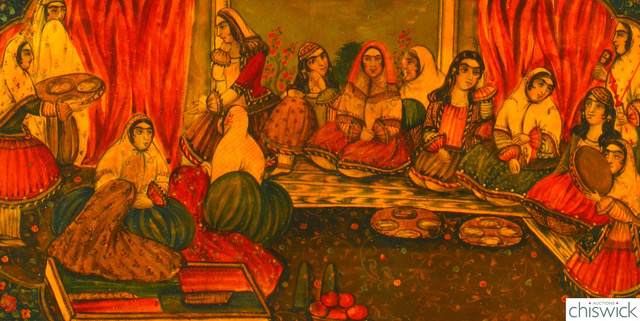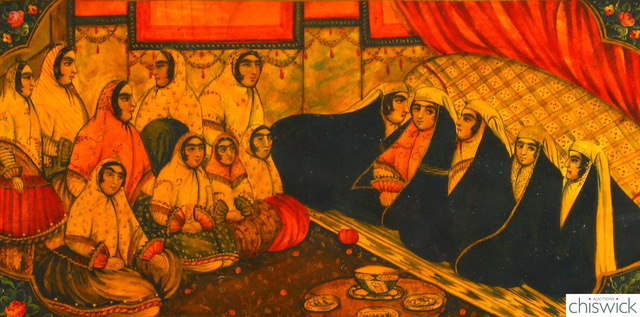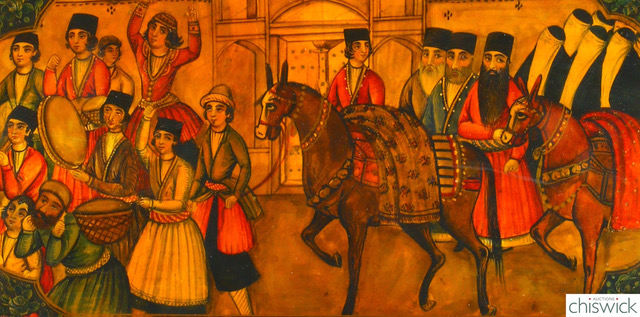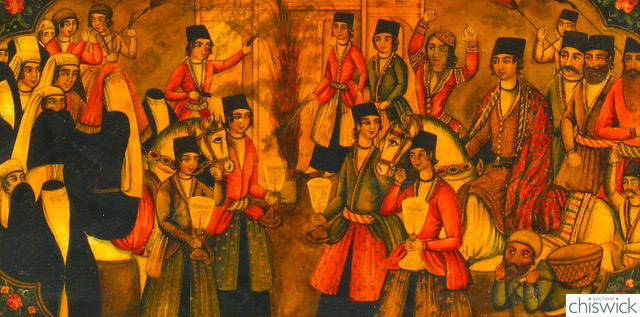Chiswick Auctions, Qajar Papier Mâché Panels
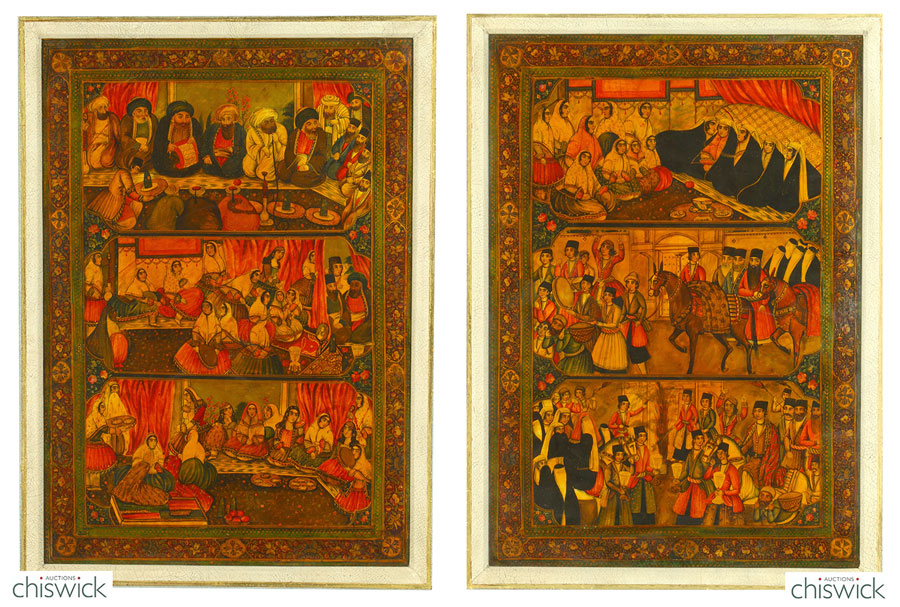
These charming 19th-century Qajar papier mâché panels are divided in three horizontal bands, which depict different moments of a traditional Persian marriage/wedding ceremony (aqd/arusi)—from the males’ gathering to discuss the proposal and draft the contract to the moment the female counterpart is made aware of the verdict, and from the procession to the actual celebration.
Amusingly the narration is presented in a format similar to a comic strip. While at times it is difficult to grasp exactly what the artist wishes to convey, here are some descriptions and thoughts. Details of these enchanting narratives can be seen below.
‘SOFREH: The Art of Persian Celebration’ provides a comprehensive account, past and present, of the Persian marriage and wedding ceremonies (aqd/arusi), in words and images. For more information, please go to The Book page.
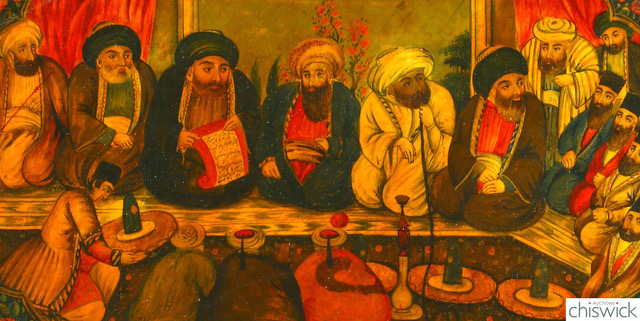
This is the first band from the Qajar panels depicting different moments of a Persian marriage/wedding ceremony (aqd/arusi). This image portrays the first stage of the ceremony, which unfolds in the men’s quarters, where the marriage contract is being negotiated. A participant is smoking a water pipe (qalian). Either drinks are being served, or those green objects represent decorated sugarloaves (kalleh qand).
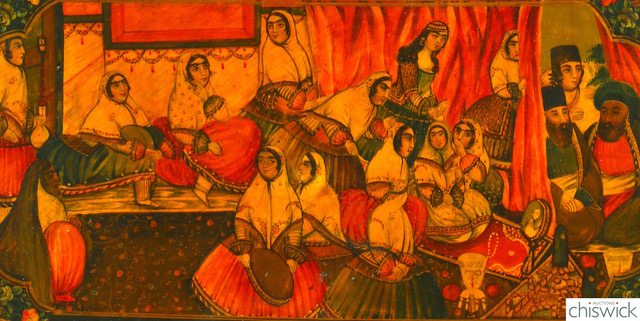
This second band illustrates the women’s section, and the partition between the male and the female quarters. Perhaps the bride’s consent to the union is being sought. She appears to be sitting on a prayer mat in front of some of the ceremonial elements of a marriage sofreh (sofreh-ye aqd), including candelabra, possibly decorated sugarloaves (kalleh qand) and a mirror which seems to reflect her image. She is surrounded by her close female relations, and a female musician is in attendance.
